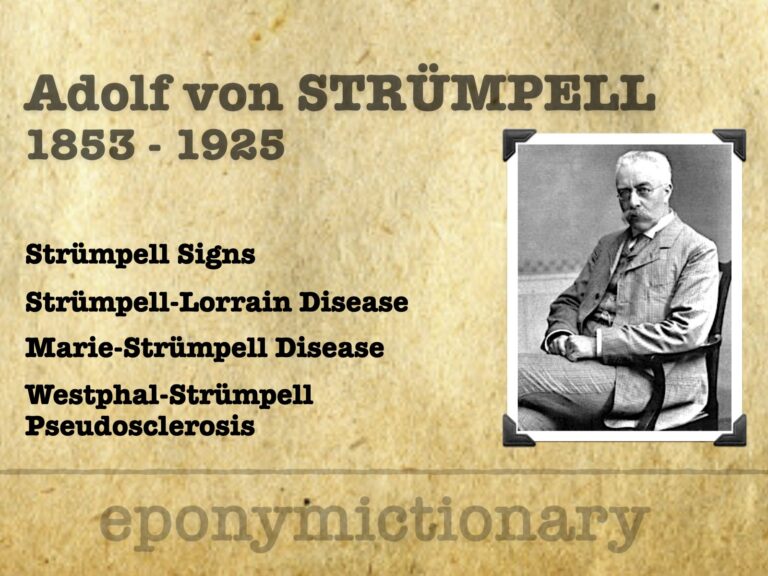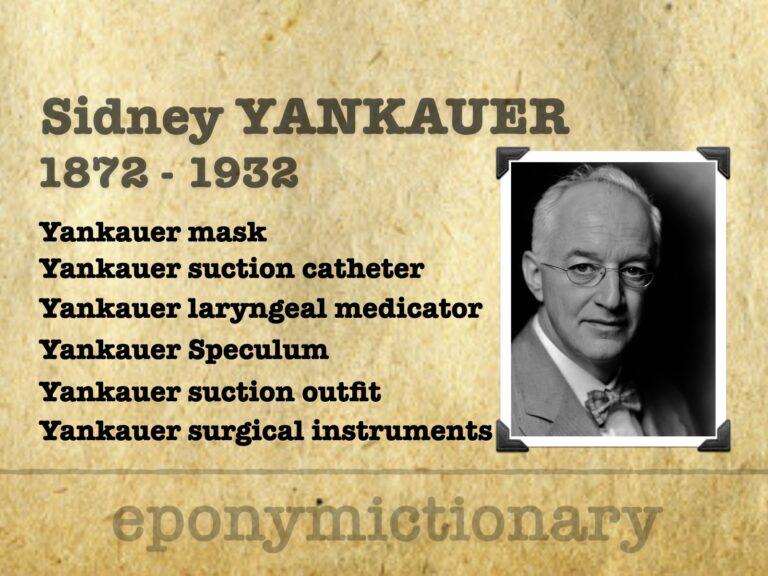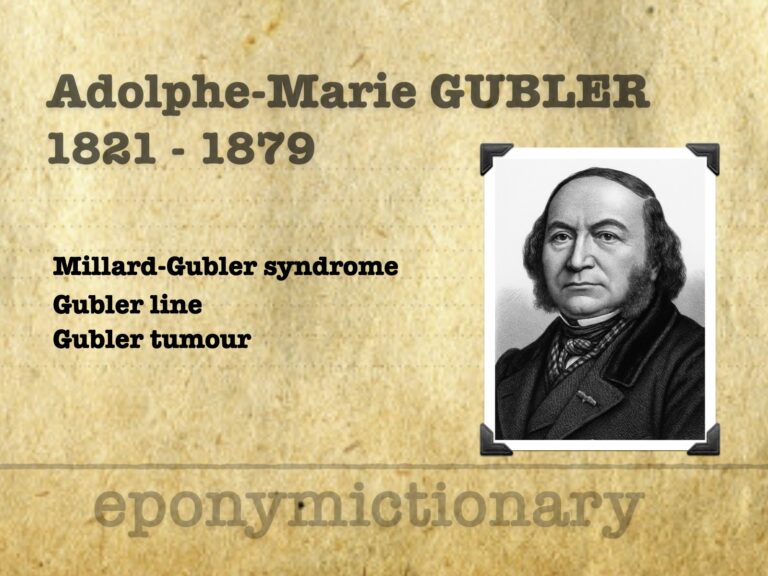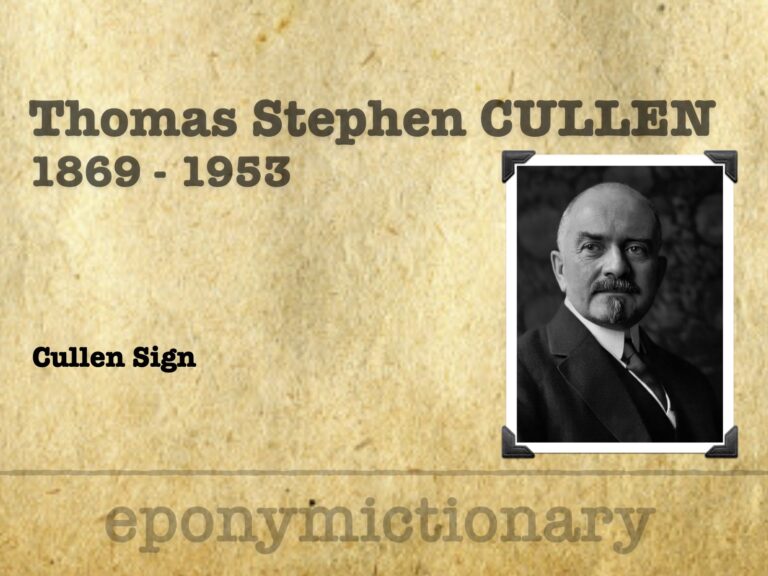
Woldemar Mobitz
Woldemar Mobitz (1889-1951) was a Russian-German physician. Applied mathematical approach to arrhythmias 1924 Mobitz Type I and II AV Block

Woldemar Mobitz (1889-1951) was a Russian-German physician. Applied mathematical approach to arrhythmias 1924 Mobitz Type I and II AV Block

Ernst Adolf Gustav Gottfried von Strümpell (1853-1925) was a German neurologist. Strümpell signs, Strümpell-Lorrain disease, Marie-Strümpell disease and Westphal-Strümpell pseudosclerosis.

William Henry Battle (1855–1936) English surgeon. Battle incision, Battle operation and Battle sign postauricular (mastoid) ecchymosis

Carl Gerhardt (1833–1902), German internist and paediatric pioneer, described Gerhardt’s sign and advanced diagnostics, paediatrics, and laryngology

Eugen Julius Karl Paul Alfred Stieda (1869 – 1945) was a German Surgeon. Eponym: The Stieda fracture, Stieda tubercle and Pellegrini-Stieda disease (1908)

Benjamin Sacks (1896–1971), cardiac pathologist and co-describer of Libman–Sacks endocarditis, also a Hollywood advisor and Arizona frontier historian.

Sidney Yankauer (1872–1932), American ENT surgeon and inventor of the Yankauer suction catheter, pioneer in bronchoscopy and surgical airway care

Adolphe-Marie Gubler (1821-1879) was a French physician and therapeutic pharmacologist. Millard-Gubler syndrome (1856)
Clement Dukes (1845–1925), English physician and school health reformer, proposed "Dukes' disease" and transformed adolescent medical care in public schools.

Alexis Littré (1654–1726), French anatomist; Littré’s hernia, glands, and operation; anatomical insights with lasting surgical impact

Claudius Amyand (c.1681–1740), Huguenot refugee and Serjeant-Surgeon to George II, performed the first recorded appendicectomy, giving his name to Amyand’s hernia

Thomas Stephen Cullen (1869 – 1953) was a Canadian gynecologist. Eponymously affiliated with Cullen sign (1918)